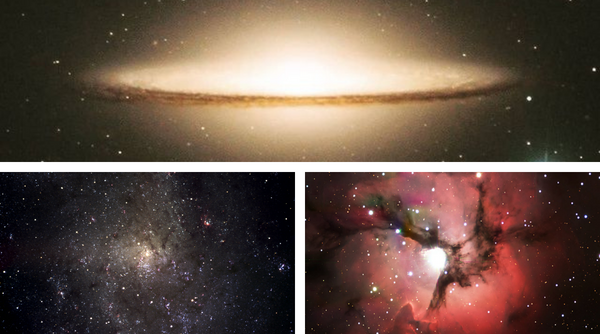Go Observing includes advanced options where you get to decide the exposure time of the observation and the filter the telescope uses. You can use these options to develop and improve your astronomy knowledge and skills.
In this project, you will plan advanced observations of several deep space objects. You will process the images using Image Software so that you can analyse and evaluate your results. The images you obtain will allow you to investigate the range of objects in the Messier Catalogue.
By the end of this activity you will:
- Have planned a series of observations
- Have used a robotic telescope to observe Messier objects
- Have produced detailed images of those objects
- Have demonstrated the range of objects in the Messier Catalogue
- Have produced a report of your results and analysis
To complete this activity you will need:
- To log into your account
- To watch our guide to making Advanced Observations
IT Equipment
- Online access to Go Observing
- Image Software that can open astronomical data files

Have a go
Plan your observations
Make sure you plan your observations carefully. You will need to decide the following:
- the Messier objects that you will observe (if you are completing this project as part of GCSE Astronomy, you need a minimum of three)
- when you want the telescope to start trying to make the observations
- the number of observations of each object (there is no requirement to have more than one, but it might be useful in case something goes wrong)
- the exposure time and filter you want to use for each observation
Submit your observations to the Liverpool Telescope
- Log in to your account
- Use the GCSE Astronomy option to observe a Nebula or Galaxy (you can either take a single observation or a 3-colour observation
- Follow your plan and the instructions on the screen to make your observation
- Repeat for your other Messier objects (make sure they are not all the same kind of object)
Process your observations
- Download your images
- Use the software to open and process your images. This is where you can reveal as much detail as possible from the images.
When you download your observations, the webpage will tell you the details of your observations, including:
- date and time
- telescope and instrument used
- observing site (precise location)
- weather conditions at the observing site
- filter and exposure time
This information is also saved within the file as metadata and can be viewed using the FITS header.
You should make a note of this information for your report.
Analyse your results
Analyse your results and comment on what the observations show. You may want to add labels to significant features in your images. Make sure to give explanations for any astronomical vocabulary you use.
Reach a conclusion. Do your observations demonstrate the range of objects in the Messier Catalogue? What have your learned?
Evaluate your results
How accurate are your images? What were the limits of the project? How could you improve the project if you did it again?
Produce a Report
A scientific report clearly and accurately communicates what you intended to investigate as well as the results of that investigation.
It should contain:
- your observation plan
- your images
- your analysis
- your evaluation
And make sure you include the following details about your equipment and methods:
- the equipment you used (telescope, instrument, and software)
- date and time of observation
- observing site (precise location)
- weather conditions at the observing site
- filter and exposure time
- rise and set times of the Moon
- phase of the Moon
- the names of the Messier objects you used
- why you chose those objects
